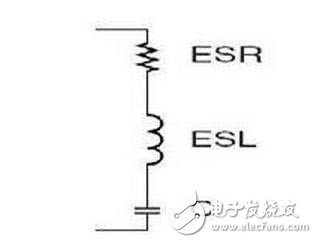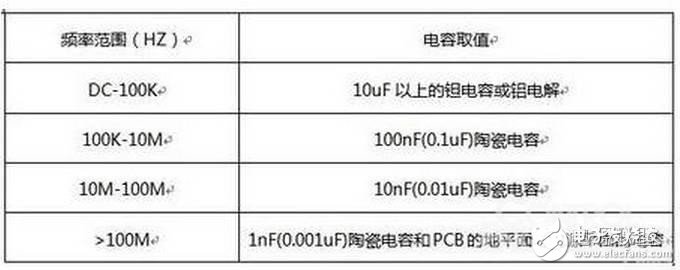The filter capacitor plays a very important role in the switching power supply. How to correctly select the filter capacitor, especially the selection of the output filter capacitor is a problem that every engineering technician is very concerned about. We can see a variety of capacitors on the power supply filter circuit, 100uF, 10uF, 100nF, 10nF different capacitance values, then how are these parameters determined?
A common electrolytic capacitor used in a 50 Hz power frequency circuit has a ripple voltage frequency of only 100 Hz and a charge and discharge time of the order of milliseconds. In order to obtain a smaller pulsation coefficient, the required capacitance is as high as several hundred thousand μF. Therefore, the goal of ordinary low-frequency aluminum electrolytic capacitors is to increase the capacitance. The capacitance, loss tangent and leakage current of the capacitor are identified. The main parameters of pros and cons. The output filter electrolytic capacitor in the switching power supply has a sawtooth wave voltage frequency of up to several tens of kHz or even several tens of MHz. At this time, the capacitance is not its main indicator. The standard for measuring the advantages and disadvantages of high-frequency aluminum electrolytic capacitors is "impedance- The "frequency" characteristic requires a lower equivalent impedance in the operating frequency of the switching power supply, and has a good filtering effect on the high frequency spike signal generated when the semiconductor device operates.
Ordinary low-frequency electrolytic capacitors begin to exhibit inductivity at around 10 kHz and cannot meet the requirements of switching power supplies. The high-frequency aluminum electrolytic capacitor dedicated to the switching power supply has four terminals, and the two ends of the positive electrode aluminum piece are respectively taken out as the positive electrode of the capacitor, and the two ends of the negative electrode aluminum piece are also taken out as the negative electrode. Current flows from one positive end of the four-terminal capacitor, through the inside of the capacitor, and from the other positive end to the load; the current returning from the load also flows from one negative terminal of the capacitor to the negative terminal of the other.
Since the four-terminal capacitor has good high-frequency characteristics, it provides an extremely advantageous means for reducing the ripple component of the voltage and suppressing the switching spike noise. The high-frequency aluminum electrolytic capacitor also has a multi-core form, that is, the aluminum foil is divided into a shorter number of segments, and multiple lead-out sheets are connected in parallel to reduce the impedance component in the capacitive reactance. And the low resistivity material is used as the lead-out terminal, which improves the ability of the capacitor to withstand large currents.
The digital circuit must be stable and reliable, the power supply must be “cleanâ€, and the energy supplement must be timely, that is, the filter decoupling must be good. What is filter decoupling? Simply put, the energy is stored when the chip does not need current. When you need current, I can replenish energy in time. Don't tell me that this responsibility is not DCDC, LDO? Yes, they can be done at low frequencies, but high-speed digital systems are different.
Let's take a look at the capacitor. The function of the capacitor is simply to store the charge. We all know that in the power supply to add capacitive filtering, put a 0.1uF capacitor decoupling on the power supply pin of each chip, etc., how do I see the capacitance of the power supply pins of some board chips is 0.1uF or 0.01uF Anything, what are you paying attention to? To understand this truth, we must understand the actual characteristics of the capacitor. The ideal capacitor is just a charge memory, C. The actual capacitors are not so simple. The capacitor models we used when analyzing power integrity are shown below.

In the figure, ESR is the series equivalent resistance of the capacitor, ESL is the series equivalent inductance of the capacitor, and C is the true ideal capacitor. ESR and ESL are determined by the manufacturing process and materials of the capacitor and cannot be eliminated. What are the effects of these two things on the circuit. ESR affects the ripple of the power supply, and ESL affects the filter frequency characteristics of the capacitor.
We know that the capacitance of the capacitor is Zc=1/ωC, the inductance of the inductor is Zl=ωL, (ω=2πf), and the complex impedance of the actual capacitor is Z=ESR+jωL-1/jωC= ESR+j2πf L-1/j2πf C. It can be seen that when the frequency is very low, the capacitor acts, and when the frequency is high, the effect of the inductor cannot be ignored. When the frequency is high, the inductor plays a leading role. The capacitor loses its filtering effect. So remember that the capacitor is not a simple capacitor at high frequencies.
It is said that the equivalent series inductance of the capacitor is determined by the manufacturing process and material of the capacitor. The ESL of the actual chip ceramic capacitor is from a few nH to a few nH, and the smaller the package, the smaller the ESL.
From the filter curve of the capacitor above, we also see that it is not flat. It is like a 'V', which means that there is a frequency selection characteristic. At that time, we hope that it is as flat as possible (pre-stage board-level filtering). And sometimes I want it to be as sharp as possible (filtering or notching). What affects this characteristic is the quality factor of the capacitor Q, Q=1/ωCESR. The larger the ESR, the smaller the Q and the flatter the curve. On the contrary, the smaller the ESR, the larger the Q and the sharper the curve. Generally, tantalum capacitors and aluminum electrolysis have relatively small ESLs, and ESR is large, so tantalum capacitors and aluminum electrolysis have a wide effective frequency range, which is very suitable for pre-stage board-level filtering. That is, the input stage of the DCDC or LDO is often filtered with a larger capacity tantalum capacitor. The 10uF and 0.1uF capacitors are decoupled near the chip, and the ceramic capacitors have a very low ESR.
Say so much, then in the end we put 0.1uF or 0.01uF near the pin of the chip, listed below for your reference.

So, don't see anything that puts 0.1uF capacitors in the future. In some high-speed systems, these 0.1uF capacitors simply won't work.
PET Braided Sleeving
Braided sleeves are widely used in computer power cord, audio-video, automotive, aviation, wire and cable industries. It has protect and beautify the role. Its unique mesh characteristics but also has good ventilation, and a thermal diffusion function in a timely manner.Wrap wires, protect the wires from erosion and moisture. And beautify the wires.
PET expandable braided sleeve compiled by the Environmental Protection PET filament diameter monofilament 0.20mm or 0.25mm's made with good flexibility, flame resistance, abrasion resistance and heat resistance, network management can be easily expanded to the original 150% , and it is easy to tighten the various irregularly shaped objects, which can be maintained within a wide temperature range while maintaining a soft, can inhibit chemical corrosion, UV and friction, characterized by its unique mesh also has good ventilation, wire heat diffusion function in a timely manner.
Pet Sleeve,Pet Cable Sleeve,Pet Braided Sleeving,Expandable Pet Sleeve
Shenzhen Huiyunhai Tech.Co.,Ltd , https://www.hyhbraidedsleeve.com